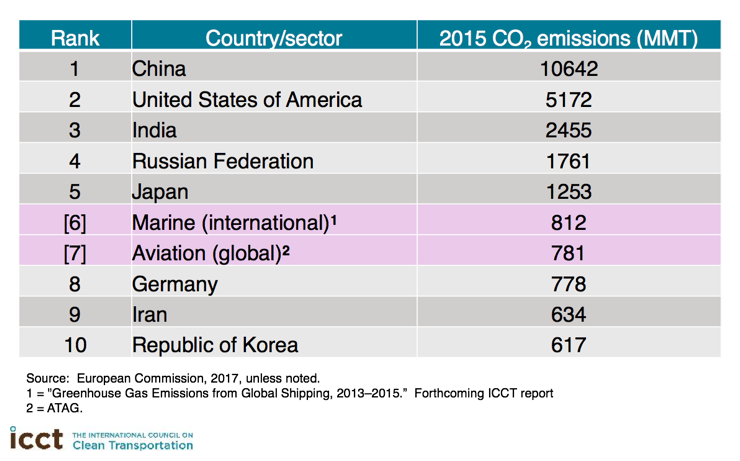Cost assessment of near- and mid-term technologies to improve new aircraft fuel efficiency
Blog
Boeing, GE, and ICCT makes three!
It’s been a dizzying couple of weeks for those (admittedly few) of us who work on aircraft emissions. Two weeks ago last Friday, the Center for Biological Diversity announced that it had sent the U.S. Environmental Protection Agency (EPA) a Freedom of Information Act request for documents linked to its decision to stop work on a greenhouse gas (GHG) emission standard for aircraft. This happened, quietly, on July 23rd as part of the Trump Administration’s deregulatory drive at the EPA. This reversal is significant because in summer 2016 EPA, through a final “endangerment” finding, formally started the process to control aviation GHGs after almost a decade of legal pressure from environmental groups. Then, just as we had settled into this new reality, EPA reversed course again, with a spokesperson telling Bloomberg’s Dean Scott that, in fact, EPA would restart work on the aircraft GHG rule in the fall. What, on earth, could be going on here?
Unfortunately, this requires speculation because there’s no public paper trail behind the decisions. The smart money, though, is that U.S. airlines and aerospace manufacturers played a key role in EPA’s decision to go ahead with the standard after all. In May 2017 two important aviation industry groups, the Aerospace Industries Association (AIA, for manufacturers) and Airlines For America (A4A, for airlines) submitted comments to EPA saying, in effect, please don’t forget to regulate aviation GHGs. Last week the Washington Post broke the story that U.S. aerospace heavyweights Boeing and General Electric, a major manufacturer of aircraft engines, went even further in private meetings with Administrator Scott Pruitt, urging him to make “GHG emissions standards for aircraft and aircraft engines more stringent.” U.S. standards are important to those companies because, without them, they may not be able to sell their products internationally. Shortly after the meeting – perhaps too soon for EPA to adjust– the CO2 standard work was discontinued. Then, just as suddenly, restarted.
At this point, no one can say can say for sure what happened, but the overall pattern is consistent with patterns seen under the Trump administration – high level skepticism toward international climate agreements, corporate pressure for the U.S. to honor those obligations because access to foreign markets are at stake, followed by muddled decisionmaking. (If anyone knows whether the U.S. will remain in the landmark Paris climate agreement please let me know – I’ve seriously lost track).
Process complaints aside, I say bully for Boeing and GE. They realize that, without an EPA aircraft standard, they could be banned from selling their products internationally. We estimate that Boeing alone has about an $250 billion backlog in foreign orders for commercial aircraft, and that’s not even counting future orders. American airlines and manufacturers have begun to realize that, left unaddressed, climate change represents an existential threat to their industry. If treated as a country, global aviation would be seventh in terms of overall CO2 emissions from energy use, just below international marine and slightly above Germany (see table). Furthermore, emissions are expected to triple by mid-century unless further action is taken.
We don’t always agree with our industry colleagues about climate change, so here let’s stress where we do. We agree that GHG emission standards are important to the future of sustainable aviation. We agree with our colleagues at Boeing and GE that they, together, make some of the most fuel-efficient planes around. Most importantly, we agree that EPA should tighten its regulation of aircraft GHGs. As we’ve shown, new planes manufactured by Boeing can meet, and indeed exceed by 10% or more, the international fuel efficiency targets recommended by the International Civil Aviation Organization (ICAO), the UN specialized agency overseeing commercial aviation. Those standards, moreover, will require only about a third of the cost effective technologies identified in this study and illustrated below.
Next year, EPA has the chance to propose an ambitious GHG standard for aircraft to promote low carbon aviation. It alluded to the possibility of going further than the UN’s weak recommendations in the 2016 endangerment finding, where it argued that it would set aircraft standards “at least as stringent as ICAO’s.” Here’s hoping that EPA agrees with Boeing, GE, and, yes, ICCT and goes further than ICAO’s least common denominator standard.


